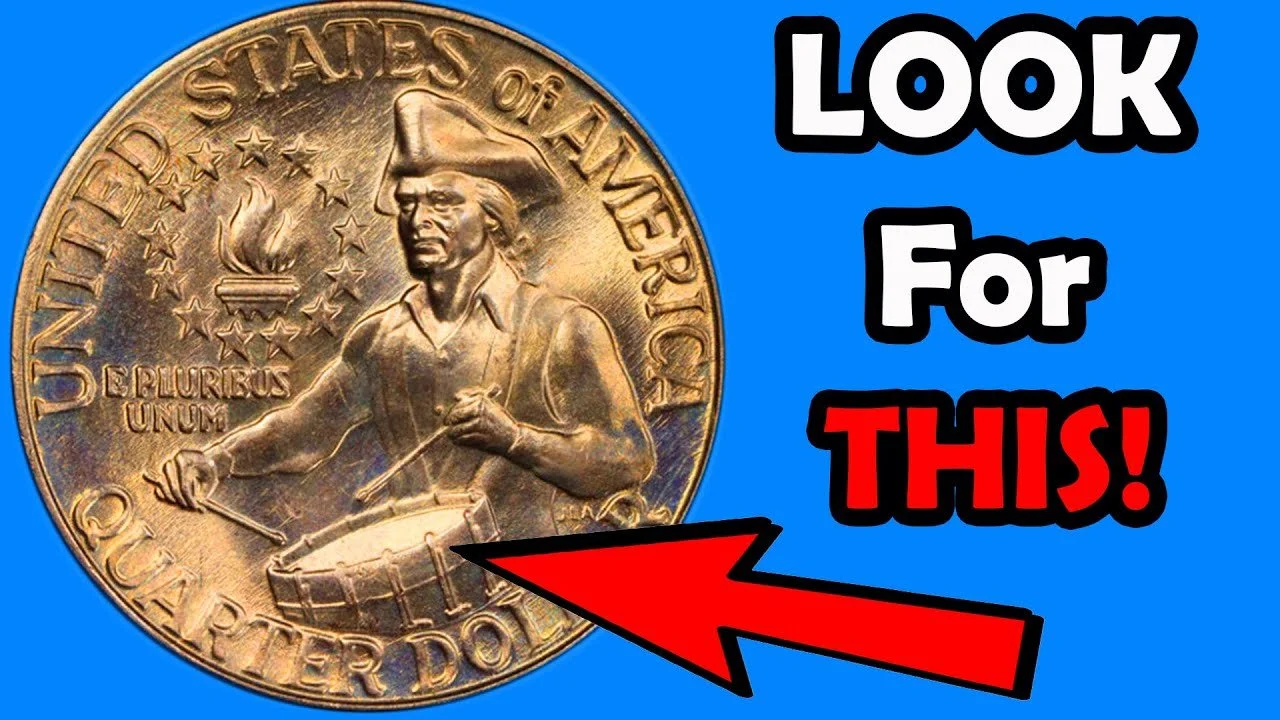The Rare: Coins have always held a unique charm for collectors and historians alike. Among them, the United States quarter stands as one of the most iconic. But while millions use quarters every day for everyday transactions, a few rare pieces have made headlines for their astonishing value. One such coin is the Bicentennial Quarter, a coin that, under rare circumstances, could be worth up to $1 million — and surprisingly, may still be circulating among everyday pocket change.
What Is the Bicentennial Quarter?
The Bicentennial Quarter was minted in 1975 and 1976 to celebrate the 200th anniversary of the United States’ independence. Unlike regular quarters, the Bicentennial design features a special reverse (tail side) showing a colonial drummer and a torch encircled by 13 stars, representing the original colonies. The obverse (head side) still bears the familiar profile of George Washington.
Interestingly, all Bicentennial Quarters bear the dual date “1776–1976”, which is part of their unique identity. Over 1.6 billion of these quarters were minted — so they are not rare in the general sense. But what makes one of them worth $1 million?
Why Is One Worth $1 Million?
Though the majority of Bicentennial Quarters are worth no more than 25 cents, a tiny number possess extraordinary traits that make them valuable to collectors. One specific variety, in particular, is rumored to be valued at up to $1 million due to several rare features:
1. Minting Error or Misstrike
The most valuable Bicentennial Quarter is believed to be a proof coin mistakenly struck on a 90% silver planchet intended for other denominations. These are not meant for circulation, and their rarity skyrockets due to the mint error.
2. Proof Quality
Some coins were minted with mirror-like surfaces and exceptional detail, known as “proofs.” While most were kept as collectibles, a few proofs might have accidentally entered circulation.
3. Exceptional Condition
A coin that has survived decades in near-perfect, uncirculated condition is a prime candidate for high-value. In rare cases, such coins have been authenticated as MS-67 or higher (Mint State) by grading services like PCGS or NGC.
4. Historical Significance
Collectors highly value anything tied to major historical events. The Bicentennial Quarter commemorates the birth of a nation, which adds sentimental and historical value — especially when coupled with rare minting circumstances.
Quick Facts About the Bicentennial Quarter
| Feature | Details |
|---|---|
| Minted Years | 1975–1976 |
| Dual Date on Coin | 1776–1976 |
| Reverse Design | Colonial drummer boy and torch |
| Designer | Jack L. Ahr (reverse) |
| Common Composition | Copper-nickel clad |
| Rare Composition (valuable) | 90% silver (proof error or special edition) |
| Estimated Top Value | $1,000,000 |
| Circulation Estimate | Over 1.6 billion |
How to Spot a Rare Bicentennial Quarter
Most quarters won’t be worth more than face value. However, if you want to check whether your quarter is special, here are some tips:
-
Check the Edge: Silver quarters lack the copper-colored strip on the coin’s edge.
-
Inspect the Finish: Proof coins often have a shiny, mirror-like surface.
-
Look for Errors: Misstruck coins, off-center strikes, or doubling of numbers/letters can increase value.
-
Weigh It: Silver planchets are slightly heavier. A normal quarter weighs 5.67 grams; silver ones may weigh about 6.25 grams.
-
Use a Magnifier: Some key differences are tiny and require close inspection.
Should You Keep It or Sell It?
If you believe you’ve found a valuable Bicentennial Quarter, do not rush to sell it. First, have the coin professionally graded and authenticated by a reputable service like PCGS or NGC. This grading can greatly influence its value and make it more attractive to buyers at auctions or through private sales.
If confirmed to be a rare piece, it may be worth thousands — or possibly even up to $1 million, depending on the coin’s attributes.
Final Thought
The idea that a $1 million coin could still be floating around in spare change sounds like a dream — but in the world of numismatics, such stories are not unheard of. The Bicentennial Quarter is a perfect reminder that treasures can sometimes be hiding in plain sight. Whether you’re a seasoned coin collector or someone casually sorting through a jar of coins, keep your eyes open — your next quarter might just be the jackpot.
FAQs
Q1: Are all Bicentennial Quarters valuable?
A: No. Most are worth only their face value. Only rare varieties with special traits (e.g., silver composition, proof errors) are valuable.
Q2: How can I tell if I have a rare Bicentennial Quarter?
A: Look for unusual color, weight, shine, or errors. A professional appraisal is the best way to confirm rarity.
Q3: Can I still find Bicentennial Quarters in circulation?
A: Yes! Many are still in use today. While the chances are slim, rare versions may still be out there.
Q4: What’s the most a Bicentennial Quarter has sold for?
A: Some special proofs or error coins have been valued between $10,000 and $1 million, depending on condition and rarity.
Q5: Where should I sell a rare quarter?
A: Consider auction houses, certified coin dealers, or platforms specializing in rare collectibles — but always get the coin graded first.
